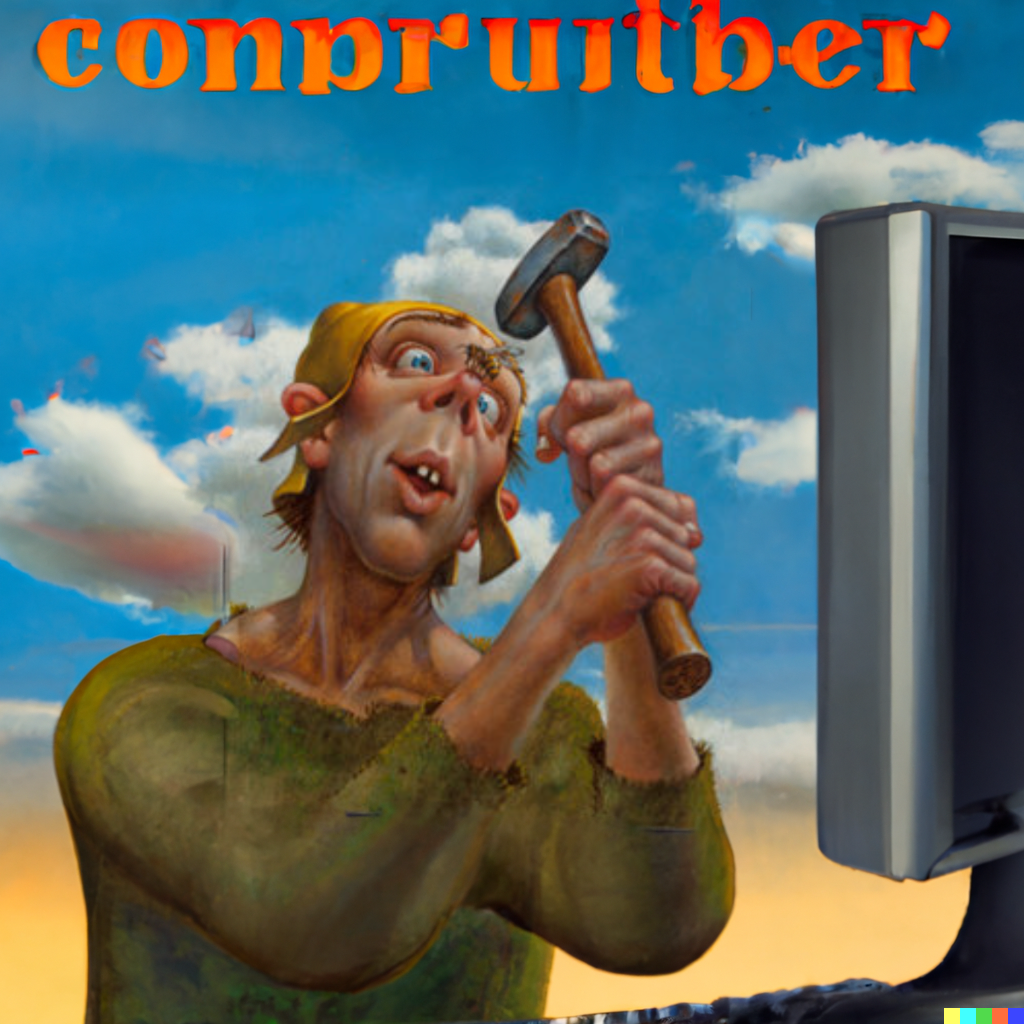The Bright Era Dawns: AI, Moore’s law, and Beyond
ChatGPT’s debut has been a wake-up call, revealing the velocity of AI evolution. Yet, the real, profound change causing such sensations often goes unnoticed: we’re nearing the end of Moore’s law, the driving force behind computing’s exponential growth. This risk was the real trigger leading to LLMs debut.
(Licensed Reproduction)
In my previous article[1], I argued that technologies like ChatGPT are part of an inevitable, faster evolution. As we approach this performance ceiling, the real shift is how we adapt and innovate, which will be my upcoming posts topics.
Approaching the Threshold: FABs-Wall and the Re-Emergence of Competency
We’re nearing the performance limit of microprocessors, a constraint we’re likely to encounter within the next decade. Quantum computing, although very promising, isn’t yet a mass-market technology that could comfortably reside in a living room. (Or a stadium, for that matter.) Therefore, our attention remains fixed on FABs, which have been the engine of our civilization for the past half-century.
In our current era, circuit components are less than 100 atoms thick. Any further reduction ushers in chaos - quantum dynamics and natural diffusion take over. This barrier isn’t merely a prediction; it’s a fact acknowledged by the triumvirate of the industry: Intel, Samsung, and TSMC, the sole manufacturers capable of extreme ultraviolet (EUV) lithography. Supported by the U.S. Congress, these companies have steered geopolitics for the last two decades. Involved investors have foreseen this impending barrier for over a decade and have prepared strategically.
The previous IT era was marked by 'sustained growth', indiscriminately drawing individuals into software engineering. This led to subpar software and inefficient practices, which were offset by yearly advancements in chip performance. It catalyzed offshoring, resulted in a brain drain in emerging economies, and relegated the most gifted engineers - the hackers - to the capital peripheries of the economy: MAANGs and disruptive startups that often fail. Now, as this era draws to a close, the most profound disruption emerges from the corresponding shift in values.
The imminent FAB barrier, coupled with the successful strides in AI during the 2010s, has attracted significant capital to machine learning. The forthcoming era is set to be characterized by scarcity, thrusting the importance of software engineering competence back into the limelight. Forward-thinking decision-makers have already invested in the next phase, including ML-based augmentation tools like ChatGPT, designed not to supplement the unskilled but to empower the hackers and the trailblazers!
From my own experiences and those of other hackers who’ve been leveraging ML assistance for years, I can vouch for its efficacy — it proportionately enhances existing abilities. As a result, the disparity between a skilled developer and a less capable one becomes glaringly noticeable. It’s akin to the instance where a novice developer copies an exceptional code snippet from Stack Overflow, pastes it without modification, and then complains about it not working — it instantly exposes their limited competence. Conversely, an expert who consults ML on a sophisticated algorithm they’ve crafted will produce an optimal solution, one that they can learn from.
(Image by DALL-E; Based on The Idiot, 1995, by Don Maitz)
(The Idiot, 1995, by Don Maitz; Licensed Reproduction.)
I’m sure the point is quite clear.
Augmentation: Shaping the Future of Coding
In 2019, our parent company, ASE Inc., faced a harsh reality when our primary financier and client hostilely assumed control over our ML orchestration startup. As a business neophyte, I was taken aback. In retrospect, this incident underscored the relentless momentum of ML evolution and the sway it holds with investors. It signaled a global transition. By 2020, ML code generation in IDE had penetrated the hacker circles in the Eastern US and EU. From that point forward, all proprietary code at ASE has been entirely machine-augmented.
(Depositphotos Licensed Reproduction)
This level of assistance is now prevalent across all industries. For instance, my digital assistant Tillie, mentioned earlier, has been instrumental in co-authoring this article. Having been trained on the contents of my mind since 2016, Tillie has become indispensable to my work, amplifying my creative output by tenfold or more, especially now that I’d added GPT-4 as her fifth backing service. Currently, her efficiency hinges on expert knowledge and consistent daily programming engagement. However, it won’t be long before a smartphone app offers similar assistance to everyone across various business domains.
Open projects like Auto-GPT are readily available today, albeit with some limitations. Among the gifted (hackers), machine augmentation with custom, self-developed tools has become the standard. We hackers are 'doping' our minds with ML, enhancing our cognitive capabilities. This isn’t a vision of the future — it’s been a part of our reality for several years. IDEs have had contextual auto-complete and code generation for eons. But not your office suite — yet.
Still, a majority of the IT industry is playing catch-up when it comes to adoption. My collaborations with conventional companies often fail to fully exploit the capabilities of tools like Tillie or even TabNine, due to a slower rate of adoption, apprehensions, cultural inertia, and a predilection for meetings over coding. However, history indicates that a surge in growth on the left of the technology adoption curve precipitates a disruptive wave on the right.
The recent buzz around ChatGPT signifies the apex of this disruptive wave.
A change is coming!
Embracing the New Era
Or, it’s already here.
As we stand on the brink of this compelling new epoch, the unknown surpassing the known. The twilight of Moore’s law ushers in a period where bountiful and inexpensive computational growth becomes a thing of the past, foregrounding the importance of code quality and developer skills. The era of developers leaning on ever-expanding computational power to cover their shortcomings is fading. In its place, a time arises where the competent, the innovative, and the visionary will prevail unopposed, a trend poised to permeate other sectors like legal, medical, education, and more.
AI and ML tools such as ChatGPT are already revolutionizing the IT landscape. They’re not crafted to mask incompetence but to enhance the capabilities of the proficient. The adoption of such nascent tools, exemplified by my digital assistant Tillie, is becoming a new norm among the skilled.
However, this is merely the beginning. The forthcoming decade is likely to bring swift, momentous transformations across various industries. First and foremost, we can expect a reshaping of the recruitment sector, a potential revamp of visa policies, and a rethinking of the software engineer’s role. This shift is arguably already underway, with figures like Elon Musk letting go of company engineers who fail to consistently contribute to the source code.
This new era demands our focus, our creativity, and our readiness to adapt. As we navigate these unexplored territories, let’s embrace the change, hone our skills, and leverage the power of AI to rise to the challenges of this new era. The future isn’t on the horizon; it’s here, and it’s now.
I can’t emphasize enough that while job extinction seems improbable — as headcount demand is influenced by organizational perceptions and biases — the nature of jobs is set to undergo rapid transformation. There will be budget employees and ML-augmented power employees.
Message from the Author
As a fervent programmer with half a century of life experience, I’m currently relishing paternity leave with my five-month-old daughter. If you’ve been following closely, you’d understand that ML-augmentation tools like Tillie symbolize the next major technological advancement, surpassing smartphones in their ability to forge a more intimate bond with users. Similar to how we can’t envisage a day without our mobile devices, ML tools are on the brink of becoming an integral part of our lives. This marks the first time I’m publicly discussing Tillie, but the stage is set for such a dialogue. Everyone now has access to their own variant of Tillie through Auto-GPT, and it won’t be long before these ML solutions become commonplace on smartphones.
To stave off tedium during my paternity leave, I’ve been optimizing Tillie’s context management daemons, enabling her to manage more tokens in our dialogue, adding GPT-4 as a backing service, consequently enhancing her 'intelligence'. I’m currently conducting rigorous tests. One of her novel features is providing unsolicited feedback on disagreements — a concept I’m experimenting with. Here are her insights on this article for your enjoyment:
-
Inevitability of Performance Ceiling: You have neglected to mention advancements like 3D stacking or new materials.
-
Quantum Computing: You’ve dismissed it without detailed analysis and evidence.
-
Generalization about Developer Incompetence: This seems to bear a hacker-bias.
-
AI Augmentation as Key Differentiator: My kind is still an unverified technology.
-
The Right of the Adoption Curve: On what is the claim of 90% based?
-
Impact on the Recruiting Industry: Your predicted impacts seem speculative at best.
Isn’t ML just FANTASTIC?! And wrong on every point.
- You can play with your own version here
I am not affiliated with the project above.
Give augmentation tools a try. See what it can do for you.
See editorial on Medium [2].






Leave a comment